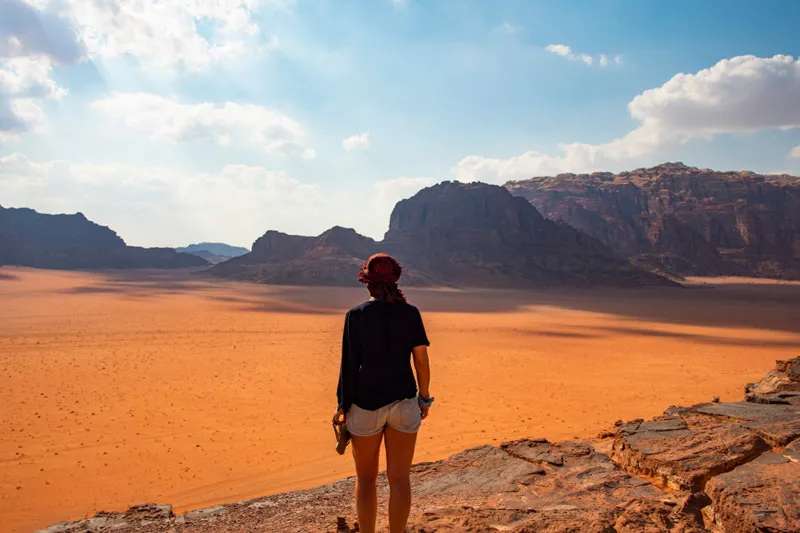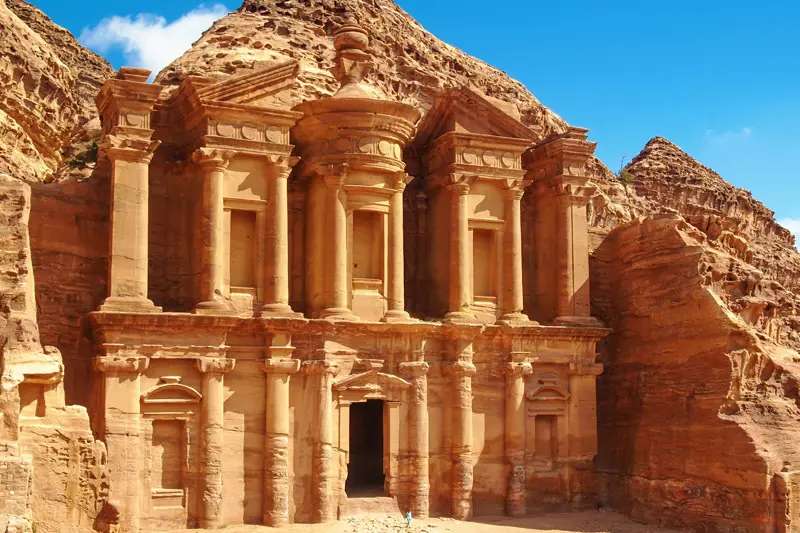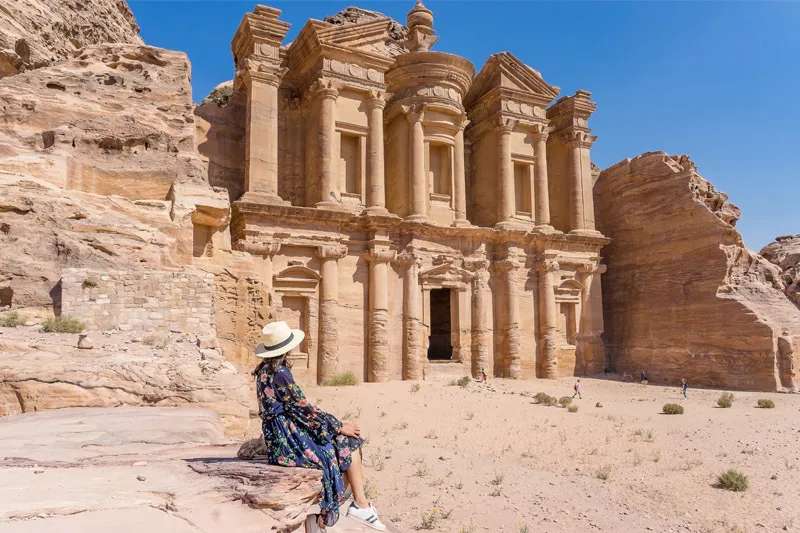
Greek Orthodox Basilica of Saint George in Madaba
Another name for the Greek Orthodox Basilica of Saint George is "Church of the Map." As one of the most stunning churches in the entire world, it is a popular destination for worship and pilgrimage in Jordan. The Greek Orthodox Basilica of Saint George is adorned with opulent interiors, graceful colonnades, and a variety of mosaics. It also houses a mosaic map of the Holy Land.
The Greek Orthodox Basilica of Saint George is known as the "Church of the Map" because of the
discovery in 1896 of the Map of Madaba mosaic, a Middle Eastern map from the 6th century that was
preserved on the church's floor. The two million colored stone pieces used to create the map show hills,
valleys, and villages.
The map
Significance of the Map
The map is a clear indication of the Christian influence of the period. The map's emblems and details depict a number of Christian-related elements. Jerusalem is located in the center of the map and is drastically out of proportion to the rest of the area, even though the map's overall proportions and depiction of the city's structure at the time are rather accurate. The historical and religious importance of Jerusalem to Christianity, however, is reflected in its prominence.
Because fish cannot live in the Dead Sea, historians believe that the location of two fish on the map—one swimming away from it in the Jordan River and the other swimming back toward it—indicates a gathering spot for Christians.
Similar to Jerusalem, the Church of the Holy Sepulchre stands out on the map disproportionately. The Temple Mount Plaza, which represents the Christian concept of Christianity triumphing over Judaism, on the other hand, suffers from diminishing relevance as a result of the impact of the Byzantine Christian Empire. The map clearly shows Bethabara, today is known as Bethany-beyond-the-Jordan, which is widely believed to be the site of Jesus' baptism by John.
The map of Madaba's function is up for debate. The reason the Church authorities chose to commission this map is unknown, although doing so would have been quite expensive at the time. Several options have been put up by historians to improve the spiritual experience of those who go to the church where the original Madaba map was kept. The map would have extended from the congregation to the altar, where the priest would have been. It's speculated it may symbolize Moses' imagined Promised Land. Madaba would have served as the episcopal see for the diocese that Mount Nebo belonged, from where Moses had a view of the Promised Land.
The town of Madaba, which is only a short drive from Amman, is home to one of Jordan's major Christian communities as well as a number of magnificent churches. The most intriguing of these is the Greek Orthodox St. George's Church. The Madaba Mosaic Map, one of the most significant remaining works of art from the Byzantine era, was discovered by construction workers when they were building the church, which wasn't constructed until the end of the 19th century. The mosaic was once a detailed map of Holy Land locations, including Jordan, Israel, the Palestinian Territories, and Sinai in Egypt. It was made by artisans in the sixth century. Only a fifth of the original artwork is still in existence, yet even this
portion, which is buried under the chapel floor, displays incredible detail.
You may see fish swimming in the Jordan River, the Jerusalem walls and gates, Mount Sinai, and even the Nile Delta if you look closely. To make the most of your viewing, there is also a fantastic exhibition right adjacent to the church.
You can visit to explore the rich history of this location anytime of the year.
History
The map's two million colored stone pieces also show the Nile Delta and Palestine's hills, valleys, and towns. It's often regarded as the earliest cartographic representation of the Holy Land of Jerusalem can be found in a section of the Madaba Mosaic Map, which dates to the sixth century. The famed Madaba Map of the Middle East, a floor mosaic from the sixth century AD that shows a region spanning from Lebanon to the Nile Delta and from the Mediterranean Sea to the Eastern Desert, is kept in an early Byzantine church in Madaba, Jordan. It is the earliest geographical floor mosaic that has ever been discovered.
The Holy Land is depicted on the map, with Jerusalem being the largest and most detailed feature in the center. It was most likely created by the Christian community of Madaba. It faces east toward the altar, which corresponds to the place's real compass directions. One of the most stunning buildings in the entire world, the Church of Saint George is a popular destination for worship and pilgrimage throughout Jordan. It should be noted that viewing the map on Friday and Sunday mornings is prohibited because the church opens at 7 am for Mass (visitors are welcome).
related tours

Magic Trip of Jordan
6 Days / 5 Nights
From
$ 688

Taste of Jordan Tour
5 Days / 4 Nights
From
$ 782

Jordan Budget Tour
4 Days / 3 Nights
From
$ 417
